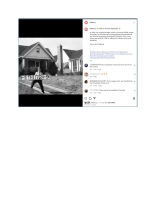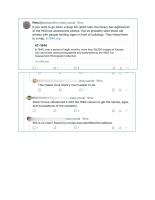KC-1940
Kansas City Public Library
Innovation Synopsis
The 1940 Tax Assessment photographs made their way to the Kansas City Public Library as a collection that was, paradoxically, both difficult to access and popular with the public. More than 50,000 photographs of houses and buildings provide a street-level glimpse into life in Kansas City 85 years ago, but regular postal addresses were not documented. Patrons hoping to find a specific location had to peruse a series of maps to identify a corresponding city block folder to which numerous postage stamp-sized prints were affixed.
The staff of the library’s digital branch created a website to ease this burden. They geocoded the block folders into polygons and placed them on an interactive map. What was once an onerous process is now as simple as clicking a location on a map. Crowdsourcing features enable site visitors to submit addresses, slowly building the value and accuracy of the collection over time. Since its launch in December 2024, the site has received more than 2,000 submission
Challenge/Opportunity
The photographs in this collection were organized into city block folders according to an esoteric system that no longer exists and for which there is little documentation. As a result, most of the property addresses were unknown, although their locations could be narrowed to a city block using a series of district maps. Additionally, the photographs were glued to large file folders and could not be removed for digitization. This organizational system meant that the file folders needed to be captured as one digital image, not as separate scans of each parcel. Nonetheless, residents and researchers desired historical photographs of specific homes, businesses, and local landmarks. The popularity of the collection, combined with the effort involved in locating addresses, strained library staff but presented an opportunity for our web development team.
Key Elements of Innovation
There are two primary innovations at play in this project. First, geocoding the block folders made the entire collection findable on an interactive map. We could easily have posted the collection as cataloged images, effectively recreating the burdensome process of locating property photographs. We chose instead to geocode each block folder, a process that was manual and time-consuming but set the stage for a more impactful website.
Second, incorporating crowdsourcing allowed us to leverage technology to compensate for the shortcomings of the collection and steadily enhance its utility. Every time a user submits an address, a stub-record for the individual building is created and moved into an approval queue. After our staff has verified the address, the stub is published and eventually will receive a new, high-resolution scan. In this way, the quality of the content improves the more people use the site.
Achieved Outcomes
On its launch day, more than 19,000 people visited the site, followed by an outpouring of appreciation for the library on local news outlets and social media. Since then, users have submitted more than 2,000 addresses, scanning orders, and comments about properties such as construction dates, business names, and notable residents.
This project has connected people to the library who may not have interacted with us before or perhaps do not rely on our traditional services. It places the library at the center of the local history ecosystem in Kansas City and serves as a doorway to our special collections department and the system as a whole. This project has affected people on a personal level and expanded notions of what services modern libraries can provide. Finding an old photograph of a family home, of a building that houses a beloved business, or of neighborhoods lost to highway construction helps our patrons experience local history on a visceral level.



